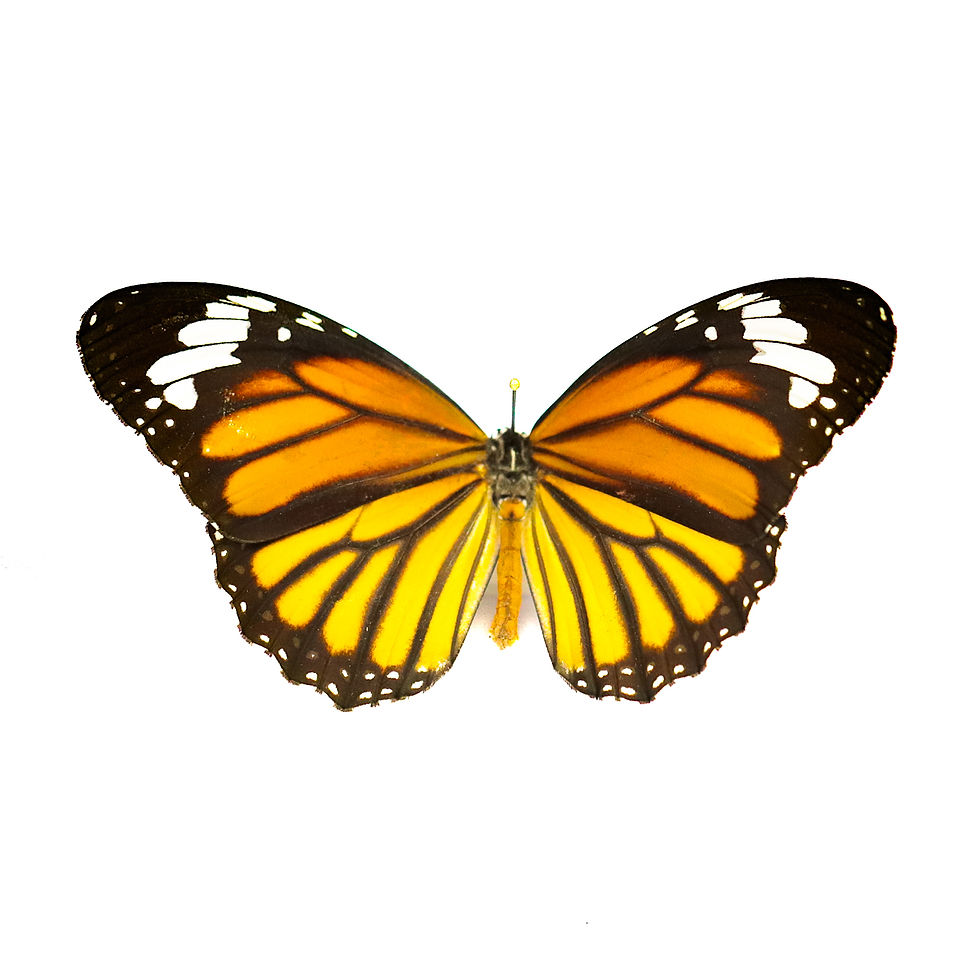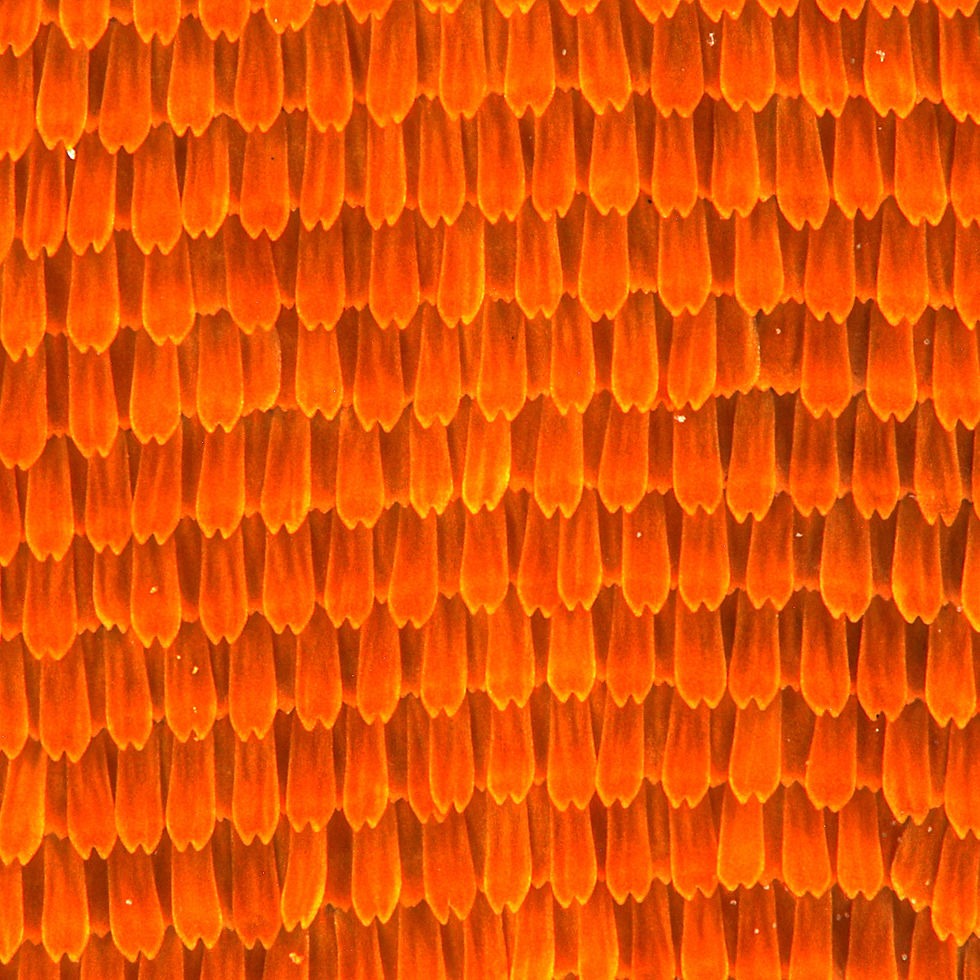Specimen Showcase | The Flying Tiger
- Hong Kong Biodiversity Museum

- Mar 10
- 3 min read
There is a Chinese idiom that goes: “like a tiger with wings”, which means with might redoubled, and often used as a wish for prosperous Year of Tiger. Though it is impossible to see a flying tiger, in nature, several butterfly species share the name of Tiger, one of which is 𝘋𝘢𝘯𝘢𝘶𝘴 𝘨𝘦𝘯𝘶𝘵𝘪𝘢 (Cramer, 1779).

The common tiger, 𝘋. 𝘨𝘦𝘯𝘶𝘵𝘪𝘢, is a species belonging to the Nymphalidae family, and is commonly found in South Asia. The name comes from the colour pattern on their wings, featured by prominent black stripes together with several white spots on their orange wings, which resemble the pattern observed in tigers. The two sides of the wings present a similar pattern but it is paler on the underside. The wingspan of adult D. genutia ranges from 70 to 80 mm. While such a colourful pattern makes them pleasant to the human eyes, it may on the other hand make them more conspicuous to predators In the absence of claws, jaws like in tigers or any other apparent defensive features (e.g. spines), how can they protect themselves? In fact, those colourful wings serve as protection, or rather as a warning signal to potential predators, a strategy called aposematism.

To understand how this works, we need to have a look at D. genutia, not as an adult, but earlier in its life while being a caterpillar. During this time, the caterpillars will be feeding on several species of Asclepiadoideae (milkweeds), which are toxic for most insects thanks to chemicals that they produce, and specifically pyrrolizidine alkaloids. But species of D. genutia, as well as a few insect species, have evolved to not only be able to ingest these toxins without suffering from their effects but to store them into their body for their own protection against predators. As a result, if a bird gets too curious and decides to get a bite at one of those caterpillars, it will have a memorable disgusting experience usually concluding by intense vomiting and will learn that some colours or patterns are better to be avoided. Here, the ability of the insect to signal the danger is as important as the one of the predator to remember it, for aposematism to be selected in nature. When the caterpillar completes its metamorphosis and becomes an adult (a butterfly if you prefer) it may change appearance completely but will retain the toxins accumulated and adopt a new warning colouration.

Although adult males and females look similar, the species is sexually dimorphic, meaning the opposite sex have different characteristics. For instance, only males have a black-and-white pouch on their hindwing. The pouch is for storing and releasing sex pheromones volatile molecules secreted by the organism) which plays important role in courtship behaviour. Another pheromone-releasing structure in males, which is called hair-pencils (specialized brush-like scales) is found within the abdomen. Once a male is close enough to a female, the hair-pencils will be forced out and release sex pheromones to attract the female for mating. What’s amazing is that to produce sex pheromones, males of 𝘋. 𝘨𝘦𝘯𝘶𝘵𝘪𝘢 will metabolize part of the pyrrolizidine alkaloids (remember those toxins acquired from the plants?) to release volatile pheromones, just like a moving perfume factory!

If many species of butterflies and moths (the larger group in the Lepidoptera order) will spend the cooler period of the year as an egg, a caterpillar or a pupae to survive, the strategy developed by 𝘋. 𝘨𝘦𝘯𝘶𝘵𝘪𝘢, is quite different. From October to December , they will migrate from inland China to the warmer coastal areas, such as Hong Kong, India and even Australia to spend the winter, some of them migrating over several hundreds of kilometers! To avoid the biting wind, those clever butterflies choose valleys or forests as their overwintering sites, sometimes aggregating in large numbers, so-called overwintering aggregation which can reach up to 50,000 individuals!When spring has arrived, they will return to their original areas. So, never underestimate the persistence and the incredible journey of these small creatures!

At HKBM, we have two specimens of this pretty butterfly. Want something more than the powerfulness of real tigers? Here is a good chance to appreciate the elegance of these “flying tigers”.
Text: Alan Fok




Comments